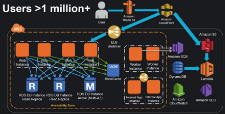How Forbes inadvertently proved the anti-malware value of ad blockers
A few months back I postulated that Adblock Plus and other ad blocking software could act as protection against malware because they kept embedded malware in web pages from ever loading in your browser. Now, Forbes has proven me right.Forbes has taken an aggressive line against ad blockers. When it detects one running on your system, it denies you access to the content until you turn off the ad blocker. Needless to say, this hasn't gone over very well with some people.Forbes included a prominent security research in an article called "The Forbes 30 Under 30," which drew a number of other security researchers to check out the article. After disabling Adblock Plus, they were immediately served with pop-under malware. Security researcher Brian Baskin was the first to tweet about it and included a screen grab of the pop-under.To read this article in full or to leave a comment, please click here
 ClearPath Networks' Michael Brenner talks about the company's release of the VSP in an special interview with Roy Chua. Read now on SDxCentral!
ClearPath Networks' Michael Brenner talks about the company's release of the VSP in an special interview with Roy Chua. Read now on SDxCentral!



